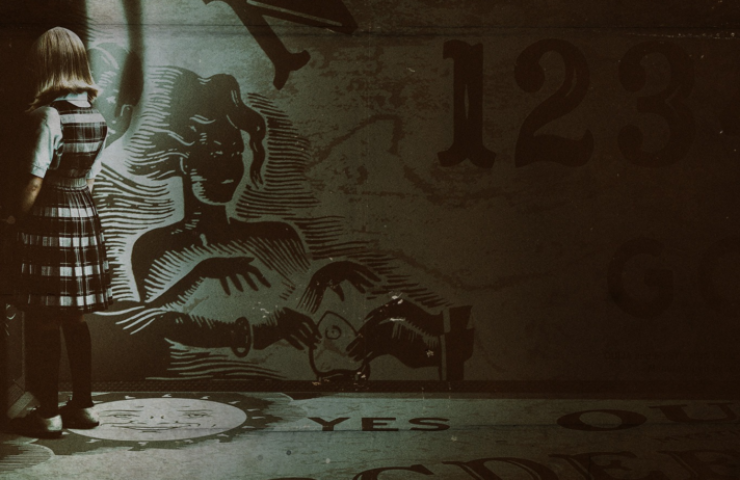The sole thing the first “Ouija” established was a bar so low that the sequel had no choice but to raise it.
As if knowing the task is too easy, director Mike Flanagan—who has contributed to the genre with “Absentia,” “Oculus” and “Hush”—chose to become an over-achiever. He and frequent writer Jeff Howard have given intrigue, energy and—most importantly—fear factor to “Origin of Evil.” The result is a thorough rinsing of the predecessor’s sourness that makes the forced mentality behind the franchise’s conception somewhat more tolerable.
Fifty-plus years ago, long before the original’s uninspired quintet encounter the titular board game and suffer in uninspiring ways, there were the Zanders. Despite working as a fraud medium, Alice (Elizabeth Reaser), with “supernatural” assistance from her daughters Lina (Annalise Basso) and Doris (Lulu Wilson), truly wants to let her patrons experience closure. When Alice decides that it’s time to amp up her performances, she buys a Ouija board and—unknowingly—gives a malevolent entity the chance to possess Doris.
It’s the young stars that thrive and shine in the film. Wilson relishes in being malevolent, mastering the art of the deadpan and soul-piercing stare that reminds viewers of Madison Wolfe’s phenomenal performance in “The Conjuring 2” back in summer. Basso’s character, while more akin to the “rebellious teen” role of contemporary-set horror rather than “Origin of Evil”‘s 1967, Lina has a steadfast trait that makes her a gripping heroine (much like Basso did in Flanagan’s previous mainstream outing, “Oculus”).
Although the characters’ destinations are clear—this is a prequel, after all—Flanagan and company pepper all sorts of entertaining, era-appropriate flourishes along the journey like cue marks, title cards and an attempt to be scary. One jolt that takes place in a schoolyard lets audio rather than gore take care of the work. A possession scene reaches its peak with elegant and surprising silence rather than using a now-commonplace deafening crescendo. It helps, too, that cinematographer Michael Fimognari (another Flanagan regular) lenses “Origin of Evil” as if with a planchette—tightly framed and with long takes—that installs tangible discomfort and claustrophobia into the majority of the set pieces.
What Flanagan still needs work on is the climactic sequence before the end. While slightly better than “Oculus” and “Before I Wake,” the climax of “Origin of Evil”—whether through editing or setup—has a choppy, vignette-by-vignette flow that contrasts all the style and footage the have come before. Also, whereas earlier frights make use of the surroundings to great effect, the basement sequence turns toward (and only toward) awkwardly placed jump scares and, in the process, lessens the impact of Doris’ demonic look.
While the conclusion eventually leads up to that horror of a film in 2014, it gives “Origin of Evil” a satisfying wrap-up, both narrative and emotional-wise. Like those who come to Madame Zander to speak with the beyond, viewers will leave with no regrets. Some may be surprised, too, at how the second try with the spirit board is much better than the first.
Hopefully producer Jason Blum will let the Ouija box rest in the corner for a while. Can it be done, though, considering Blum is the architect of five films out of just a single paranormal activity in Katie and Micah’s house? The planchette is pointing to, and might even be skidding toward, “NO.”
Whatever the case, here’s hoping Blum will learn upon seeing the markedly different receptions between “Ouija” and “Origin of Evil.”
Ouija: Origin of Evil
Elizabeth Reaser (Alice), Annalise Basso (Lina), Lulu Wilson (Doris), Henry Thomas (Father Tom)
Directed and written by: Mike Flanagan (“Hush”)
Co-written by: Jeff Howard (“Oculus”)
Cinematography by: Michael Fimognari (“Beautiful Boy”)
99 min., PG-13
Release date: Oct. 21
7.5 out of 10.





Recent Comments